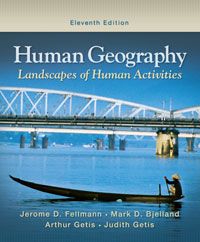1.
A) primary B) secondary C) tertiary D) quaternary E) quinary 2.
A) subsistence B) commercial C) planned 3.
A) Latin America B) Africa C) Middle East D) all of these 4.
A) nomadic herding B) shifting cultivation C) urban subsistence farming D) rice farming 5.
A) 25% B) 33% C) 45% D) 66% E) 75% 6.
A) India B) China C) Thailand D) South Korea E) Singapore 7.
A) True B) False 8.
A) production subsidies for certain crops B) market price C) transport costs D) "A" and "B" E) "B" and "C" 9.
gathering industries ?A) mining and forestry B) fisheries and quarrying C) quarrying and mining D) forestry and fisheries 10.
extractive industries ?A) mining and forestry B) fisheries and quarrying C) quarrying and mining D) forestry and fisheries 11.
A) True B) False 12.
A) South American and the Caribbean B) East Asia and Southeast Asia C) Europe and the United States D) the Middle East 13.
A) True B) False 14.
A) 5% B) 12% C) 23% D) 32% 15.
A) construction lumber and pulp for paper B) hardwood logs for lumber C) fuelwood and charcoal D) furniture and railroad ties 16.
A) construction lumber and pulp for paper B) hardwood logs for lumber C) fuelwood and charcoal D) mine timbers and railroad ties 17.
A) Russia B) United States C) China D) Canada 18.
A) quantity available B) richness of the ore C) distance to markets D) land acquisitions and royalties 19.
A) True B) False 20.
A) metallic minerals B) fertilizers C) earth materials D) fossil fuel minerals 21.
A) natural gas B) petroleum C) coal D) peat 22.
A) 33% B) 50% C) 66% D) 75% 23.
A) natural gas B) petroleum C) coal D) peat 24.
A) 15% B) 25% C) 33% D) 50% 25.
A) True B) False 26.
A) True B) False 27.
A) True B) False 28.
developed countries has continued to decline.developed countries has declined and bottomed out around 2000.developing countries has continued to decline.A) I and IV B) II, III, IV C) II, III, V D) III, V 29.
A) True B) False 30.
A) South America. B) Latin America. C) Africa. D) Southeast Asia. 31.
A) The eastern Australian coast. B) The western Australian coast. C) The southern Alaskan coast. D) The Northern Scandinavian coast. E) All these coasts are part of major commercial marine fishing areas. 32.
A) ranching B) vegetable farming C) mixed farming D) grain farming





